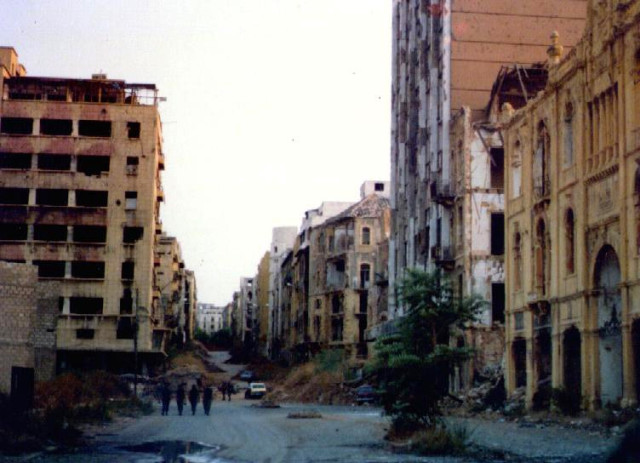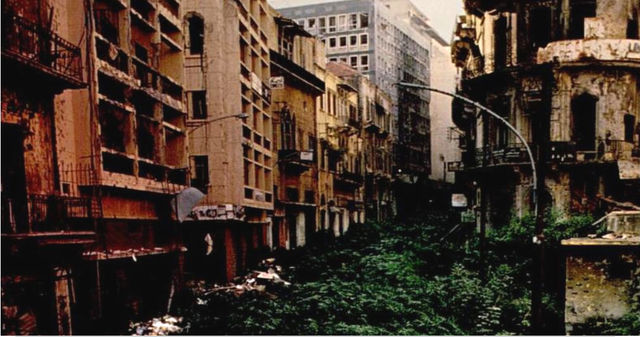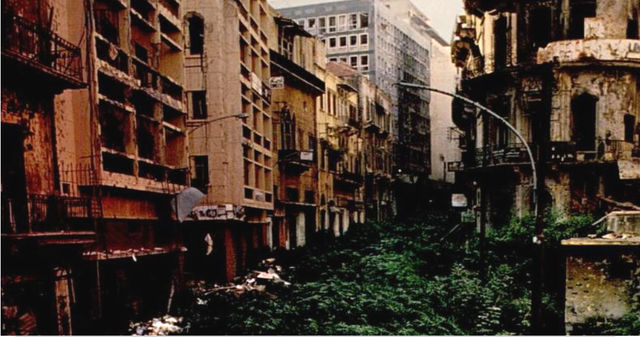When the Lebanese Civil war erupted in 1975, there was a specific spot in the Lebanon’s capital, Beirut that was a de-militarized zone, no man’s land,”a geographical spot of fear” an invisible border that not only separated Beirut geographically into west and east but into two different religions. It was dubbed The Green line and separated the mainly Muslim factions in West Beirut from the predominantly Christian East Beirut controlled by the Lebanese Front.

The Lebanese Civil War was a multifaceted civil war lasting to 1990 and resulting in an estimated 250,000 fatalities. As of 2012, approximately 76,000 people remain displaced within Lebanon. There was also an exodus of almost one million people from Lebanon as a result of the war. Before the war, Lebanon was multisectarian, with Sunni Muslims and Christians being the majorities on the coastal cities, Shia Muslims being mainly based in the south and the Beqaa to the east, with the mountain populations being in their majority Druze and Christian. The government of Lebanon had been run under the significant influence of the elites of the Maronite Christians. The link between politics and religion had been reinforced under the mandate of the French colonial power from 1920 to 1943, and the parliamentary structure favored a leading position for the Christians. However, the country had a large Muslim population and many pan-Arabist and left-wing groups opposed the pro-western government.
The fragile geographical spot that separated Beirut into two opposing spatial units got the name Green Line because of the lush green belt that emerged in the spot when trees and grass grew in the midst of the streets and buildings that were nearly demolished, destroyed and abandoned in the land untouched by men for years. Many of the buildings along the Green Line were severely damaged or destroyed during the war, and the trees and all the foliage that grew on the spot added to the symbolism that this was the neutral border of the city. Khutut at tammas is the Arabic term for the front line, which literally means : confrontation line.

The Green Line became the symbolic heart of Beirut, the architecture of the city just as the great wall was in China and Berlin Wall in Berlin, but unlike these barriers that were manmade, the green, lush border that separated the city was all nature. But, aside of the symbolic, the Green Line was a vulnerable point for both West and East Beirut. During Israel’s siege of West Beirut, Israel surrounded Western Beirut and stationed tanks along the Green Line. During the Syrian occupation of Lebanon after the Syrian military withdrew from East Beirut in August 1982, the Palestine Liberation Army was dispatched to the Green Line under the command of the Syrians. The residents on both sides of the line disapproved of the presence of the Palestine Liberation Army.
Since the war ended in 1990 many of the buildings have been rebuilt within the framework of the urban renewal project of Solidere in Beirut’s Central District. Nowadays the Green Line in Berlin is packed with cars, shops and people.
